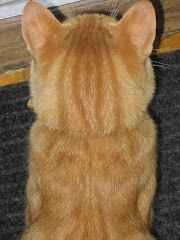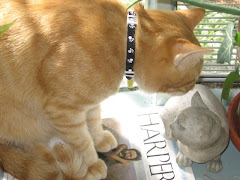If you think of geographical locations which have lent their names to foods, you can easily make a whole meal out of places. How about starting with a steaming Manhattan clam chowder followed by a smoked Turkey and Cheddar Sandwich with Dijon? Skip the mayo; it has too much Greece.
A cup of Java with just a Cuba sugar served in fine China would wash it down. After a baked Alaska with a glass of Champagne, you can ask the waiter for the Czech; Taiwan on for the road, and then go on your merry way.
Many dishes are named after places - everything from Lancashire Hotpot (a casserole of meat and vegetables topped with sliced potatoes) and Dundee Cake (a rich fruit cake) to Anglesey eggs (a dish of leeks, mashed potatoes, hard-boiled eggs and cheese sauce), baked Ulster ham, and Bath buns (a sweet bun containing spices and dried fruit, originally made in Bath, western England). And did you know that HP sauce is thus known as it was created by the chef at the House of Parliament?
Boston cream pie
Boston Cream Pie consists of layer of fluffy, rum-laced custard sandwiched between a moist, light sponge cake topped with chocolate sauce. It is more like a cake than a pie. What is known about its origin is that someone, most likely from Bosto wanted to replace the pie crust as the standard foundation for a creamy filling, and baked a cake batter in a pie pan, creating a totally new and instantly popular dessert.
Cornish pasties
Cornwall in south-west England is famous for its Cornish Pasties - a pastry case filled with meat, potatoes and vegetables, which was the traditional midday meal of workers in the region. The compactness of the pastie, resembling the Italian calzone with its various fillings, made it a harty and convenient item for the lunchbox.
Bakewell tart
The town of Bakewell in Derbyshire, England, has a rich pastry tart named after it. The Bakewell pudding ( the British call all dessertsincluding cakes and pies 'pudding' ) or Bakewell tart was said to have been created by accident. When a cook forgot to put jam over the custard filling of a pudding, she spread it straight onto the pastry case and poured the custard on top. Thus a new dish was born!
Welsh cakes
Welsh cakes, a kind of sweet cake cooked on a griddle, were originally served to hungry travellers when they arrived at an inn for the night while they waited for their supper to be cooked. The dough is rolled and cut into shapes which then are cooked on both sides on a hot griddle.
Frankfurters were named after Frankfurt, Germany, where these sausages were first made in the Middle Ages, as experts believe . About 1900, an American vendor selling cooked hotdogs called them "hot dachshuns" and since then, because of the sausage's resemblence to the long-bodied dog, the nomeclature 'hot dog' came to be used.
Baked Alaska
The name Baked Alaska originated at Delmonico's Restaurant in New York City in 1876, and was created in honor of the newly acquired territory of Alaska. Supposedly, it was later popularized worldwide in 1895 by chef Jean Giroix of the Hotel de Paris in Monte Carlo.
Also known as the Norvegian omelette, Baked Alaska consists of hard ice cream on a base of sponge cake. It is then covered with uncooked meringue and kept in the freezer until serving time, when it is placed under a broiler just long enough to brown the meringue. The combination of the ice cream and the broiled sweet meringue create a wonderful sensation on the palate and combine the two opposites of ice and fire in this showy dessert.
The gastronomical delights, named after places go on and on. Here I have covered a few. And for the last selection, I'll let William Makepeace Thackery describe in his own words the nature of Bouillabaisse.
" A Street there is in Paris famous,
For which no rhyme our language yields,
Rue Neuve de petits Champs its name is-
The New Street of the Little Fields;
And there's an inn, not rich and splendid,
But still in comfortable case--
The which in youth I oft attended,
To eat a bowl of Bouillabaisse.
This Bouillabaisse a noble dish is--
A sort of soup, or broth, or brew,
Or hotchpotch of all sorts of fishes,
That Greenwich never could outdo;
Green herbs, red peppers, muscles, saffern,
Soles, onions, garlic, roach, and dace;
All these you eat at Terre's tavern,
In that one dish of Bouillabaisse. "
~ excerpt from The Ballad Of Bouillabaisse ~
Easy Baked Alaska
8 egg whites
1/8 teaspoon salt
1 egg
1/2 teaspoon almond extract
2 quarts vanilla ice cream, softened
1/8 teaspoon cream of tartar
1 (18.25 ounce) package white cake mix
1 cup white sugar
Line the bottom and sides of an 8-inch round mixing bowl with foil. Spread ice cream in the bowl, packing it firmly. Cover and freeze for 8 hours or until it is firm.
Preheat oven to 350 degrees F. Grease and flour an 8x8 inch round cake pan.
Prepare cake mix with egg and almond extract. Pour into the prepared cake pan.
Bake in the preheated oven according to package instructions, until the centre of cake springs back when it is lightly touched.
Beat egg whites with cream of tartar, salt and sugar until stiff peaks form.
Line a baking sheet with parchment paper. Place cake in the centre. Turn frozen moulded ice cream out onto the cake.
Quickly spread meringue over the cake and ice cream, all the way to the bottom to seal the ice cream. Return to the freezer 2 hours.
Preheat oven to 425 degrees F (220 degrees C).
Bake the Alaska on the lowest shelf, 8 to 10 minutes, or until meringue is lightly browned. Serve at once.
Boston Cream Pie
Eggs contribute to the airiness of this sponge cake. Therefore, it's essential that the eggs be room temperature in order to whip to their best volume.
Milk Sponge Cake
1 cup sifted cake flour
1 teaspoon baking powder
1/8 teaspoon salt
1/3 cup milk
3 tablespoons unflavored vegetable oil
3 large eggs, room temperature
1 egg yolk, room temperature
2/3 cup sugar
1 teaspoon vanilla
powdered sugar for decoration
Adjust rack in lower third of oven and preheat to 350 degrees. Line a 9-inch springform pan with parchment or waxed paper; do not grease. Sift flour, baking powder and salt. In a small bowl add the the milk and oil; do not be concerned that they do not blend together.
In a large mixing bowl, whisk the eggs, yolk and sugar to combine. Using an electric mixer at medium speed, whip the egg mixture until it is light ivory in color and very fluffy, about 6 minutes.
Add the vanilla toward the end of whipping. Using a rubber spatula, fold in the flour mixture in two additions. Pour the milk mixture down the side of the mixing bowl. (It will sink to the bottom of the bowl under the batter.)
Gently fold until the milk mixture is thoroughly incorporated. Pour the batter into the pan. Bake 25 to 30 minutes or until the cake is golden on top and it springs back when lightly pressed in the center. Remove pan from oven to a wire rack until cool.
Boston Cream Filling
Only half of this rich, thick pastry cream, lightened with whipped cream is needed for the dessert. Enjoy the remaining filling with fresh fruit.
1 cup milk
1/2 cup sugar, divided
3 egg yolks
3 tablespoons flour
1 teaspoon each dark rum and vanilla
1/2 cup heavy cream, whipped
In a small bowl whisk to combine the egg yolks and 1/4 cup sugar, then the flour. In a medium saucepan over medium heat, combine the milk and 1/4 cup sugar and heat just until it comes to a boil. Remove, and pour half of the hot liquid over the yolk mixutre, stirring to combine.
Pour the yolk mixture back into the saucepan, and bring it to a boil again, stirring constantly. When it is thick and smooth, remove the pan from the heat and pour the mixture into a large bowl to cool. Cover surface with plastic and refrigerate. When ready to assemble the dessert, stir in the rum and vanilla until smooth, then fold in the whipped cream.
Chocolate Sauce
This is the creamiest chocolate sauce you'll ever taste -- and there's no cream in the recipe.
1/2 cup each water and light corn syrup
12 ounces semisweet chocolate, chopped
In a small saucepan over low heat, bring the water and corn syrup just to the boil. Remove from the heat, add the chocolate and stir constantly until the chocolate melts and the sauce is smooth and glossy. For best results, reheat in a double boiler.
To assemble the dessert, split the cake into two layers. Spread half the filling evenly over the bottom cake layer. Center the other layer on top. Place the cake on a serving plate, cover with plastic and refrigerate.
Before serving, sprinkle top of cake with powdered sugar. Spoon warm chocolate sauce onto individual plates.
Using a serrated knife, slice dessert into "pie-shaped" wedges and center each portion on the sauce. Yield: 8 servings
Copyrighted Material ~ Copyright © 2004 All Rights belong to Füsun Atalay












































